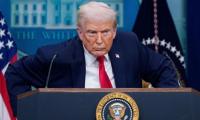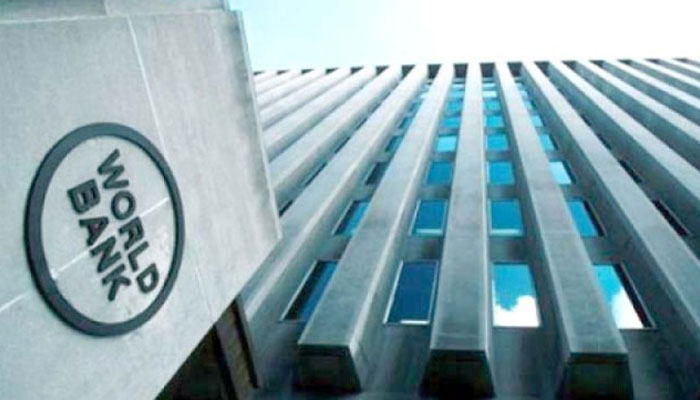Pakistan’s renewable shares exceed global average: WB
KARACHI: Share of renewable energy has surpassed the global average in Pakistan – one of the world’s top 20 countries accounting for three quarters of the global energy demand, but with more than a quarter of the population without access to electricity, the World Bank said on Saturday.
The World Bank in the Energy Progress Report 2019 said renewable share in Pakistan crossed over the global average of 17.5 percent in 2016 due to traditional uses of biomass for cooking.
The World Bank said Pakistan was among the top 20 energy consumers globally that represent only two-thirds of renewable energy consumption. Of them, six countries have renewable shares crossed the global average, according to the World Bank’s report covering the 2010-2017 period. Traditional uses of biomass too dominated the renewable consumption in India, Indonesia and Nigeria. Modern uses of biomass were most prevalent in Brazil and hydropower in Canada.
The World Bank said Pakistan has seen a rapid increase in annual access to electricity and clean fuel between 2010 and 2017, though it is still one of the countries with the lowest electrification rates.
The World Bank said the country saw more than one percent increase in electrification during the period, which was one the “rapid annual access gains” among the world’s top 20 access-deficit countries. Comparatively, Vietnam and Indonesia recorded more than three percent growth in access between 2010 and 2017, while Sudan, Afghanistan, and Myanmar registered over two percent increase in access of their populations to electricity.
“In a majority of the top 20 access-deficit countries, the electrification rate between 2010 and 2017 did not keep pace with population growth during the same period,” the World Bank said. The top 20 energy consumers account for three-quarters of global energy demand.
The World Bank said the total access rate in Pakistan’s urban centres was 100 percent, but it was 54 percent in rural areas. More than 58 million people are living without access to electricity in the country compared with 99 million in India and 20 million in Bangladesh. Together the three countries have un-served population less than four million of 181 million in the rest of the world.
“Some of the countries with un-served populations of over 50 million in 2017—like the Democratic Republic of Congo, Nigeria, and Pakistan—have electrified less than 1 percentage point of their population annually since 2010,” the World Bank said in the report prepared in collaboration with the International Energy Agency, the International Renewable Energy Agency, the United Nations Statistics Division and the World Health Organization.
-
 Meghan Markle Set To Take Big Decision On Returning To UK For Invictus Games
Meghan Markle Set To Take Big Decision On Returning To UK For Invictus Games -
 Prince Harry To Leave Britain One Day Earlier Than Expected For THIS Reason
Prince Harry To Leave Britain One Day Earlier Than Expected For THIS Reason -
 The Way You Consume Sugar Could Be Affecting Your Health
The Way You Consume Sugar Could Be Affecting Your Health -
 Brooklyn Beckham Gets Backing From Vanessa Marcil Amid Feud With Parents
Brooklyn Beckham Gets Backing From Vanessa Marcil Amid Feud With Parents -
 OpenAI Uses AI To Detect Under 18 Users On ChatGPT
OpenAI Uses AI To Detect Under 18 Users On ChatGPT -
 Philippines To Lift Ban On Grok AI After Musk's Platform Commits To Fix Safety Concerns
Philippines To Lift Ban On Grok AI After Musk's Platform Commits To Fix Safety Concerns -
 Trump Vows ‘no Going Back’ On Greenland Ahead Of Davos Visit
Trump Vows ‘no Going Back’ On Greenland Ahead Of Davos Visit -
 Alexander Skarsgard Breaks Silence On Rumors He Is Bisexual
Alexander Skarsgard Breaks Silence On Rumors He Is Bisexual -
 King Charles Faces Rift With Prince William Over Prince Harry’s Invictus Games
King Charles Faces Rift With Prince William Over Prince Harry’s Invictus Games -
 Elon Musk’s Critique On ChatGPT Safety Draws Sharp Response From Sam Altman
Elon Musk’s Critique On ChatGPT Safety Draws Sharp Response From Sam Altman -
 Katherine Ryan Takes Aim At Brooklyn Beckham In Fierce Defense Of His Parents
Katherine Ryan Takes Aim At Brooklyn Beckham In Fierce Defense Of His Parents -
 How Timothy Busfield, Melissa Gilbert Really Feel After Release From Jail
How Timothy Busfield, Melissa Gilbert Really Feel After Release From Jail -
 OpenAI, Bill Gates Launch ‘Horizon 1000’ To Transform AI Healthcare In Africa
OpenAI, Bill Gates Launch ‘Horizon 1000’ To Transform AI Healthcare In Africa -
 Prince Harry Receives Praises For Exposing Dark Side Of British Tabloids
Prince Harry Receives Praises For Exposing Dark Side Of British Tabloids -
 Andrew Forces Beatrice, Eugenie To Lose $60 Million Safety Net Saved For Retirement
Andrew Forces Beatrice, Eugenie To Lose $60 Million Safety Net Saved For Retirement -
 Nvidia CEO Jensen Huang To Visit China To Push Re-entry Into AI Chip Market
Nvidia CEO Jensen Huang To Visit China To Push Re-entry Into AI Chip Market




